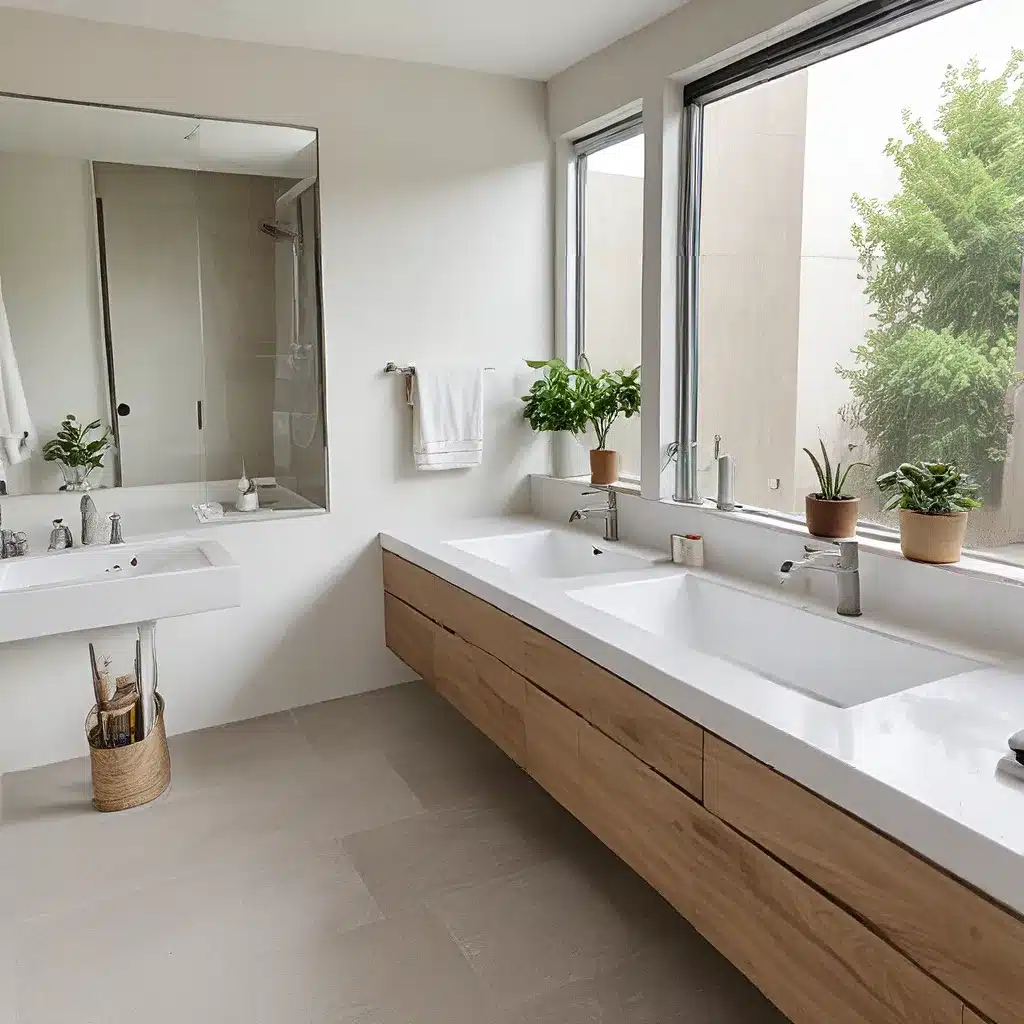
When it comes to bathroom renovations, the sink or washbasin is often the centerpiece that sets the tone for the entire space. However, finding the perfect sink that fits your budget and aligns with your sustainability goals can be a daunting task. Fortunately, there are a variety of affordable and eco-friendly sink options available that can transform your bathroom without breaking the bank.
Exploring Sustainable Sink Materials
One of the primary considerations when selecting a sink for your bathroom renovation is the material. The choice of material not only impacts the overall aesthetic but also the durability, maintenance, and environmental impact of the sink. Let’s explore some of the most sustainable and budget-friendly sink materials:
Recycled Glass and Porcelain
Recycled glass and porcelain sinks are an excellent choice for eco-conscious homeowners. These materials are not only durable and easy to clean, but they also have a lower environmental impact compared to traditional sink materials. Recycled glass sinks are crafted from reclaimed glass, giving them a unique and modern appearance, while porcelain sinks offer a classic and timeless look.
Solid Surface
Solid surface sinks, such as those made from materials like quartz or acrylic, are another sustainable and affordable option. These sinks are highly durable, easy to maintain, and can be customized to fit your specific bathroom layout. Solid surface sinks are also available in a wide range of colors and styles, making them a versatile choice for any bathroom design.
Reclaimed Wood
For a natural and rustic look, consider a reclaimed wood sink. These sinks are crafted from salvaged or repurposed wood, reducing the demand for new materials and giving your bathroom a unique, eco-friendly aesthetic. Reclaimed wood sinks are often budget-friendly and can be paired with a variety of bathroom styles, from farmhouse to industrial.
Soapstone
Soapstone is another durable and sustainable sink material that is gaining popularity in bathroom renovations. This natural stone is heat-resistant, non-porous, and requires minimal maintenance, making it a practical and eco-friendly choice. Soapstone sinks often have a classic and timeless appearance that can complement a variety of bathroom styles.
Maximizing Space and Functionality
When renovating your bathroom on a budget, it’s essential to maximize the available space and ensure the sink provides the necessary functionality. Consider the following design options to optimize your bathroom layout:
Undermount Sinks
Undermount sinks are a popular choice for bathrooms as they create a seamless and streamlined look, integrating the sink into the surrounding countertop. This design eliminates the need for a visible lip around the sink, making the countertop easier to clean and maintain.
Wall-Mounted Sinks
For small or narrow bathrooms, a wall-mounted sink can be an excellent space-saving solution. These sinks are mounted directly to the wall, freeing up valuable floor space and creating a modern and minimalist aesthetic.
Pedestal Sinks
Pedestal sinks are a classic and budget-friendly option that can work well in both small and large bathrooms. These sinks feature a separate basin and stand, providing a traditional look while taking up minimal floor space.
Installation and Maintenance Considerations
When renovating your bathroom on a budget, it’s important to consider the installation and maintenance requirements of your chosen sink. Proper installation is crucial for ensuring the long-term functionality and durability of your sink, while maintenance can help preserve its appearance and extend its lifespan.
Professional Installation
While some sink materials, such as laminate or ceramic tile, may be suitable for DIY installation, it’s generally recommended to hire a professional plumber or bathroom contractor for more complex sink types, such as natural stone or solid surface. Professional installation can ensure a proper fit, secure connections, and adherence to local building codes, ultimately saving you from potential issues down the line.
Maintenance and Cleaning
The level of maintenance required for your sink will depend on the material. Quartz, porcelain, and soapstone sinks tend to be the easiest to clean and maintain, often requiring only a simple wipe-down with a mild cleaning solution. Reclaimed wood and marble sinks may require more specialized care, such as periodic sealing or refinishing, to preserve their appearance and prevent damage.
Budgeting for Your Bathroom Renovation
When planning a bathroom renovation on a budget, it’s crucial to prioritize your spending and identify areas where you can save. Consider the following strategies to maximize your budget:
Secondhand and Salvaged Fixtures
Secondhand or salvaged bathroom fixtures, such as sinks, toilets, and faucets, can be a cost-effective and sustainable way to update your bathroom. These items are often in gently used condition and can be found at local thrift stores, estate sales, or online marketplaces for a fraction of the cost of new products.
DIY and Sweat Equity
If you’re handy and willing to put in the time and effort, consider taking on some of the DIY tasks during your bathroom renovation, such as demolition, painting, or tiling. This can help reduce labor costs and allow you to allocate more of your budget towards high-quality fixtures and materials.
Budgeting for the Long-Term
While initial costs are an essential consideration, it’s also important to factor in the long-term value and sustainability of your bathroom renovations. Investing in durable, low-maintenance fixtures and materials, such as recycled glass or quartz sinks, may cost more upfront but can save you money in the long run by reducing the need for frequent replacements or repairs.
By exploring sustainable and affordable sink options, optimizing your bathroom layout, and carefully managing your renovation budget, you can transform your bathroom into a beautiful, functional, and eco-friendly space that meets your needs without breaking the bank.

